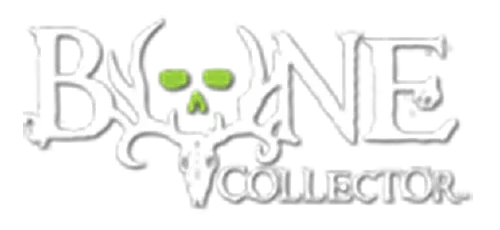The Great Bowhunting Debate | Quiver On Or Off?
Every serious archery hunter knows this pursuit is all about precision. From shooting stance and arrow weight, to breathing rhythm and consistent use of all the same parts and pieces – be it nocks, broadheads, release, you name it – it pays big to be as close to perfect as you can get.
Every hunter also has their own idiosyncrasies, ways they prefer to do things, carry their equipment, butcher animals … the list is long. What we’re getting at, is the right way may not always be the best way, and it may or may not be the way you’ve found works best for you either. Which is why, when it comes to the decision to shoot and/or hunt with your quiver attached to your bow, there are plenty of differing opinions on the matter. Add to those preferences many years of hunting experiences, some that maybe went well when a quiver was detached rather than attached and others that went much the opposite – well, that leaves all of us with even more to consider when trying to make up our minds once and for all.
That’s handy
The obvious argument for shooting with your quiver attached to your bow, is convenience. If you shoot and miss or need to quickly send another arrow into a downed, but not yet dead animal, ideally your extras will be within easy reach. Finding yourself in a similar situation with your quiver detached and having to scramble to find and nock another arrow could wind up being disastrous for all involved – you risk putting yourself in a dangerous spot in close proximity to a wounded big-game animal and could end up losing the critter all together should it have time to get up and haul out before you’ve got your stuff pulled together.
Rather than attaching a quiver to their bow, some hunters opt to attach it to themselves. Hip and backpack quivers, while a good alternative to adding bulk to your bow, often prove to be even more cumbersome, catching on brush and making lots of extra noise banging against your body with each step, stalk and climb.
Move it
Another pro to keeping your gear all together is that it helps cut down on the amount of movement necessary to get an arrow off. In the heat of the moment, when adrenaline is high and nerves are rattled, detached quivers can wind up being tough to reach, get knocked over or even fall from your stand. Each of those situations then requires more movement to grab, retrieve or catch your bunch of arrows before then getting one nocked and the bow pulled back … and, by that time, that’s if the deer sticks around long enough to even give you the opportunity.
That said, not having quite made up your mind about whether you’ll leave your quiver attached or not can have the same result. Starting a sit with it off and – whether due to a midday mishap or change of heart due to some serious over-thinking – then making the call to attach it partway through your hunt, is a good way to blow out any nearby animals that you’d maybe not seen yet. At the very least, the movement and sound that come with locking your quiver onto your bow can draw an otherwise oblivious deer’s attention to you in an instant.
Hunt over.
Don’t be that guy.
All it takes is one
On the other hand, in an obvious argument against shooting with your quiver attached, is the fact that when full of arrows, the units get heavy. Given that a quiver attaches to one side of your bow, thus hanging all of that weight on a single side only, a loaded quiver can make it harder for the shooter to steady the bow when aiming and shooting. In a perfect world, just one arrow would be necessary for every animal you harvest. However, due to residing in the real world, most of us know this isn’t always the case.
A loaded quiver – one holding six or eight arrows – also ups mass and bulk you’re carrying around and wielding up and over hills or when crawling under fallen trees and other debris on your route. It also increases the vibration felt after the shot, as well as the noise made by your bow when the arrow is released – all things that can result in animals jumping the string and your gear getting a less-than-stellar hit when it connects. Any accessory you add to your bare bow has the potential to skew weight. It also has the potential to increase the noise made by your bow when the arrow releases.
Give it a shot
Before making the call on your quiver, take some practice shots. Load the quiver with the number of arrows you’d plan to take with you on an upcoming hunt, attach it to your bow and do some shooting. No doubt this will change how the bow feels during the draw, target acquisition and shot. Take note of the differences. Does it throw your balance? Cause your arm to drop? Are your shots now consistently low? Are you missing shot after shot?
If you’re set on hunting with your quiver attached, don’t fret. A stabilizer or side rod offers a potential fix, balancing your bow front-to-back or side-to-side, opposite where your quiver connects – go ahead, give ‘em both a try.
In addition to taking plenty of practice shots with your quiver attached, you should also practice shooting from the spots you plan to spend most of your time hunting, to see how your setup works in those spaces. If your arrows catch on your stand, are constantly hitting your blind when you draw or are getting hung up on anything as you’re getting into position, you might need to give your quiver station a bit more thought. For example, treestand hunters can easily hang a quiver on the tree behind or beside them, and those hunting from a blind can set quivers on the floor, on an extra chair, or hang them from the blind itself. Perhaps rendering additional arrows a bit less convenient than if the quiver was attached, but not terribly so.
The good news?
There’s plenty, don’t worry. Ultimately, regardless of your stance – quiver on or quiver off – and where you hunt – blind, stand or from the ground, spotting and stalking – you still have to haul your bow and your arrows with you into the field. The right answer, in this case, is determined only by what works best for you – hunt how you’re most comfortable. If you’re finding success and enjoying the hunt, we’re not sure there’s really anything else that matters.
Here’s to finding what works best for you.




